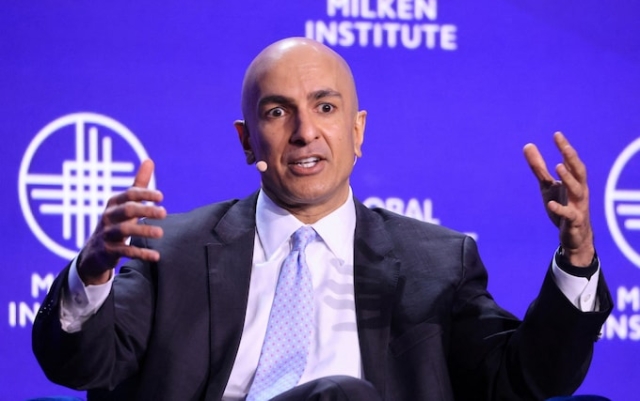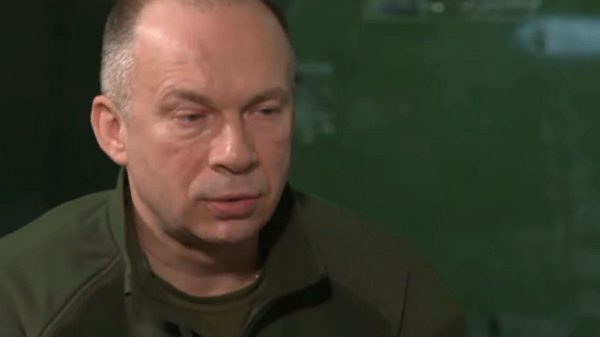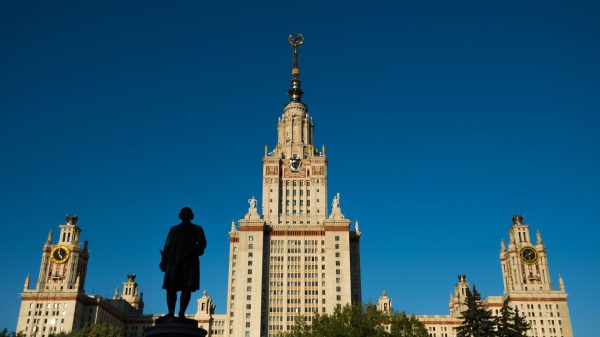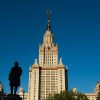 Neil Kashkari says he wants to see 'a few months of real progress in fighting inflation'; before the Fed can consider cutting interest rates. Photo: REUTERS/David Swanson
Neil Kashkari says he wants to see 'a few months of real progress in fighting inflation'; before the Fed can consider cutting interest rates. Photo: REUTERS/David Swanson
U.S. interest rates are unlikely to fall for several months, according to a senior Fed official, who said a surge in immigration is likely to keep borrowing costs rising for a long time.
Neel Kashkari told The Telegraph he wants to see «a few months of real progress in inflation» before the Fed can consider cutting interest rates.He added that US borrowing costs are likely to remain at current level for “several months.” for an extended period of time.»
The president of the Minneapolis Federal Reserve Bank added that he is «particularly concerned» about robust U.S. housing demand, which has not been dampened by higher interest rates.
Mr Kashkari said a «sharp rise in immigration», coupled with demand from people working from home and years of construction backlog, was putting pressure on the housing market.
Calling the resilience of the housing market a «mystery», Mr Kashkari said there were signs that industry demand was keeping inflation high.< /p>
He said: “Housing has traditionally been the most interest rate sensitive sector of the economy. And it has shown remarkable resilience and even some evidence that new leases are picking up again.
“It's also particularly concerning because when we do the math, it takes a year or more for new leases to come through. rents have become actually measured by inflation. And if the number of new leases is now picking up again, this is especially worrying.”
Asked about factors putting pressure on the housing market, Mr Kashkari added: “After the great financial crisis, we under-built housing. we have been building homes in the USA for over ten years. So there is a shortage of houses.
“And then post-Covid there is an increased demand for housing. More and more people are working from home. There appears to be an increased demand for housing for the existing population. And over the last few years we've seen a big surge in immigration. They obviously need a place to live.
“All these factors could support housing demand.”
Mr Kashkari added: «[If] there was a surge in immigration, if it were sustained, I think it would have a significant impact on the economy.»
Goldman Sachs estimates that in 2023 the number of immigrants in the US was about 2.5 million people, significantly higher than the 1.6 million people suggested by official census estimates.
Mr Kashkari said high levels of immigration were also an important factor in the growth of the US economy.
The Congressional Budget Office (CBO) projects that US immigration will increase US GDP by $7 trillion (£5.5 trillion) over the next decade.
Mr Kashkari said immigration was controversial issue. problem on both sides of the Atlantic: Rishi Sunak faces a battle to convince voters they can trust him on immigration.
“In the UK, as in the US, there are some political issues around immigration at the moment for both of our countries, but historically the UK has done a pretty good job of welcoming immigrants into their country, as has the US, and I think that it was a real source of strength for both countries over a long period of time.”
The Fed is keeping interest rates between 5.25% and 5.5% from July 2023. The U.S. central bank's preferred inflation gauge rose to 2.7% in March from 2.5% in February, sending financial markets jittery.
Fed Chairman Jerome Powell said this month that policymakers «will need more time than previously expected» to accept that inflation will fall to the target of 2%.
Although Mr Kashkari said the next step would be for interest rates to fall rather than rise, he predicts that rates are likely to remain unchanged for most of this year.
He said: «I think the balance of risks suggests it is likely to decline, but we shouldn't rule anything out at this point.»
«I think the more likely scenario is that we are sitting where we are
Mr Kashkari added that service sector inflation has been “much more resilient” over the past few months, providing another obstacle to rate cuts.
He said: “In the second half of last year we saw very rapid disinflationary progress and that was a comfort to us all because the economy was strong and inflation was falling rapidly. I expected and hoped that this would continue into the first quarter of this year, [but] inflation has more or less moved to the side.”
He added: “I want to see evidence that inflation is moving well.” go back down to the 2pc target. I'm not saying we need to get all the way back to 2% before we start cutting interest rates, but I need to make sure we're getting there before I can normalize interest rates.»


























































Свежие комментарии